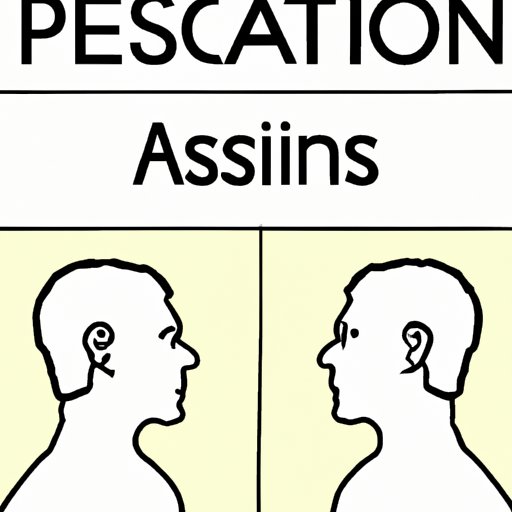Introduction
Persuasion is a powerful tool used to influence others and get them to agree with your point of view. It can be used in a variety of settings, from business negotiations to political debates. In order to be successful at persuasion, you need to understand the key elements of persuasion and how they can be used effectively. This article will explore the various techniques used to be persuasive and provide tips on how to use them effectively.
Identify Your Audience and Tailor Your Message to Them
The first step in being persuasive is to identify your audience and tailor your message to their needs and perspectives. This means that you need to research your audience and gain an understanding of their wants, needs, and values. Once you have a better understanding of your audience, you can craft an engaging message that resonates with them and persuades them to take action.
Use Facts, Data, and Evidence to Back Up Your Arguments
When making an argument, it is important to back it up with facts, data, and evidence. This helps to make your argument more convincing and increases its chances of success. When gathering information, it is important to make sure that it is reliable and comes from a reputable source. Once you have collected the relevant information, present it in a clear and concise manner to support your argument.

Utilize Storytelling Techniques to Engage and Persuade
Storytelling is a powerful tool that can be used to engage the audience and persuade them to take action. To create an effective story, you need to create an interesting plot and use visuals to help tell the story. Additionally, it is important to connect the story to your argument so that the audience can understand the relevance of your point.

Understand the Power of Emotions and How They Can be Used to Persuade
Emotions play an important role in persuasion and can be used to sway an audience to your point of view. When crafting your message, consider the emotional impact it may have on the audience. Utilize positive language and appeal to the audience’s values in order to evoke an emotional reaction. This will help you to be more persuasive.

Practice Active Listening in Order to Understand What the Other Person Wants and Needs
Active listening is an essential part of persuasion. This involves taking the time to listen carefully to the other person and ask questions to better understand their perspective. By demonstrating understanding and compassion, you can build trust and increase the chances of successfully persuading the other person.
Conclusion
In conclusion, persuasion is a powerful tool that can be used to influence others and get them to agree with your point of view. To be successful at persuasion, it is important to identify your audience and tailor your message to their needs and perspectives. Additionally, it is essential to use facts, data, and evidence to back up your arguments, utilize storytelling techniques, understand the power of emotions, and practice active listening. With these tips, you can become a master of persuasion.
(Note: Is this article not meeting your expectations? Do you have knowledge or insights to share? Unlock new opportunities and expand your reach by joining our authors team. Click Registration to join us and share your expertise with our readers.)
